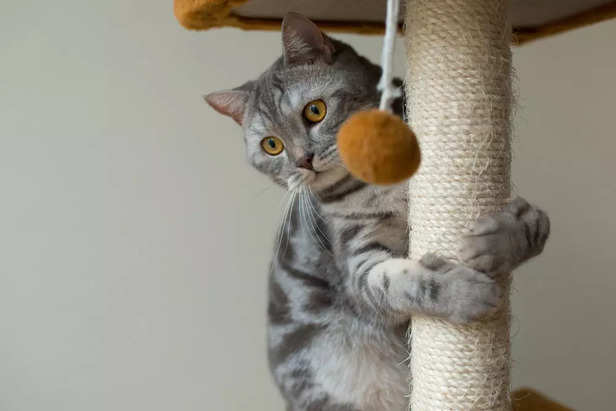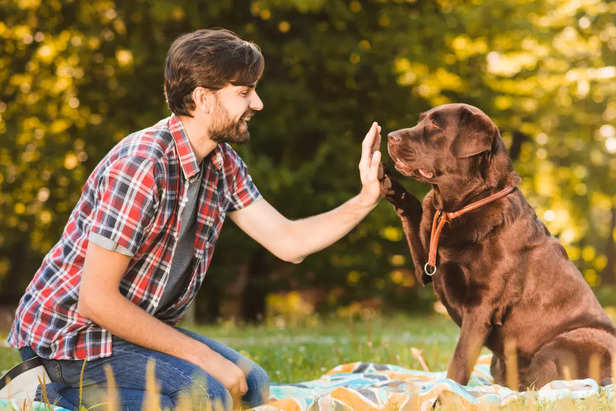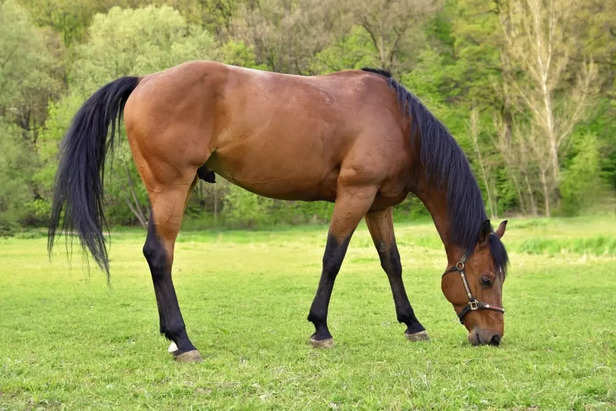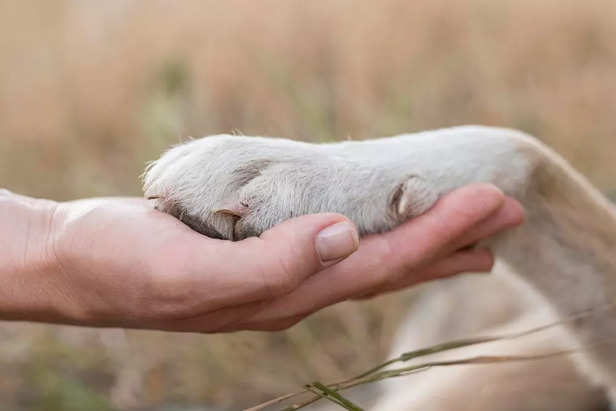The Hidden Language of Tails: What Your Pet’s Tail Movements Mean
Ishan Banerjee | Mar 24, 2025, 19:51 IST
What Your Pet’s Tail is Telling You
Have you ever wondered what your pet is trying to say with just a wag, a flick, or a curl of their tail? While we humans rely on words, pets use body language—and their tails are one of the biggest giveaways!A happy wag doesn’t always mean excitement, and a tucked tail isn’t just about fear. In fact, your pet’s tail is a silent storyteller, revealing emotions like curiosity, stress, confidence, or even playfulness. If you’ve ever misread your pet’s signals, you’re not alone! But don’t worry—we’re decoding the hidden language of tails so you can understand your furry (or feathery) friend like never before.
The Science Behind Tail Communication 
Animals evolved to communicate without words, and tail movements are a vital part of their non-verbal language.
Why Do Pets Use Their Tails? • To express emotions like happiness, fear, or aggression.
• To balance their movements (especially in cats).
• To communicate with other animals or even with humans.
Different species use unique tail signals, so understanding your pet’s behavior requires close observation.
The Dog’s Tail – Not Every Wag Means Happiness!

A wagging tail doesn’t always mean a happy dog. In fact, different wag speeds, directions, and positions can indicate excitement, anxiety, or even aggression.
• High and stiff: Alert or dominant. Your dog is on high alert and might be feeling territorial.
• Mid-level, relaxed wag: Happy and friendly. This is the classic “I’m excited to see you!” wag.
• Low and tucked between the legs: Fear or submission. A dog doing this may feel scared or unsure.
• Fast wag, but stiff: Potential aggression. If your dog’s tail is moving fast but rigid, they might be feeling threatened.
• Slow wag: Cautious curiosity. A dog unsure of a new situation may wag its tail slowly while assessing the environment.
People often assume any wagging means happiness, but that’s not always true. A stiff, upright tail wag with tension may be a warning sign, while a loose, relaxed wag shows genuine happiness.
The Cat’s Tail – The Master of Mysterious Movements

Unlike dogs, cats have an entirely different tail language. If you own a cat, you’ve probably seen their tail twitch, puff up, or flick around. But what does it all mean?
• Straight up with a slight curl: Friendly and confident. Your cat is happy and comfortable.
• Puffed-up tail: Scared or defensive. This reaction makes the cat look bigger when frightened.
• Twitching tip: Irritated or focused. A cat concentrating on prey or annoyed by petting will often flick just the tip of its tail.
• Slow swishing from side to side: Playful or mildly annoyed. If it speeds up, they may be ready to pounce—or ask you to back off!
• Tail wrapped around you: Affectionate. This is the feline version of a hug.
Unlike dogs, a fast, whipping tail movement in cats is NOT a good sign. If a cat is lashing its tail back and forth rapidly, they may be upset, overstimulated, or ready to strike!

While dogs and cats are the most common pets with expressive tails, other animals also use tail movements to communicate!
• Quick flick of the tail: Playful mischief. Your rabbit might be feeling playful or teasing you.
• Tucked tail: Fear or submission. A rabbit with its tail pressed down is feeling scared.
• Fanning out the tail feathers: Excitement or aggression. Parrots and other birds do this when they’re trying to assert dominance.
• Lowered tail: Relaxed and content. If your bird’s tail is gently resting, they feel safe.
• Swishing tail: Irritation. Horses swish their tails to express frustration (or to shoo away flies).
• Raised tail: Excitement or alertness. A horse lifting its tail is engaged and attentive.
How to Read Your Pet’s Tail in Different Situations
Understanding tail language is essential for better communication and a stronger bond with your pet.
1. Meeting New People or Pets
• Dogs: A wagging tail low and relaxed means friendly; a high, stiff wag could mean tension.
• Cats: A raised tail with a curve is friendly, while a flicking tail means back off.
• Other pets: Rabbits may flick their tail playfully, while birds might puff up their tail feathers when stressed.
2. During Playtime
• Dogs: A loose, happy wag shows excitement, but a stiff wag may signal over-excitement that could lead to rough play.
• Cats: A slowly swishing tail often means they’re in hunt mode.
• Other pets: Rabbits do “binkies” (little jumps) when excited, sometimes accompanied by a flicking tail.
• Dogs: Tucking the tail between the legs signals fear or submission.
• Cats: A puffed-up, bristling tail means extreme fear or aggression.
• Other pets: Horses swish their tails rapidly when annoyed, while birds may hold their tails low when feeling unwell.

Once you start paying attention to tail movements, you’ll notice patterns in your pet’s behavior that you never saw before! This deeper understanding can help you:
Your Pet’s Tail Never Lies!
Your pet’s tail isn’t just wagging for fun—it’s speaking volumes! By learning to read the secret language of tails, you can connect with your pet on a whole new level. So, the next time your dog wags, your cat flicks, or your rabbit twitches its tail—pay close attention. You might just discover a whole new way to talk to your pet without saying a single word!
Discover expert advice and the latest tips on pet care, training, health, and more. Stay updated with all things pets at Times Pet!

Tail Communication
Animals evolved to communicate without words, and tail movements are a vital part of their non-verbal language.
Why Do Pets Use Their Tails? • To express emotions like happiness, fear, or aggression.
• To balance their movements (especially in cats).
• To communicate with other animals or even with humans.
Different species use unique tail signals, so understanding your pet’s behavior requires close observation.
The Dog’s Tail – Not Every Wag Means Happiness!

The Dog’s Tail
A wagging tail doesn’t always mean a happy dog. In fact, different wag speeds, directions, and positions can indicate excitement, anxiety, or even aggression.
What Different Tail Positions Mean in Dogs
• Mid-level, relaxed wag: Happy and friendly. This is the classic “I’m excited to see you!” wag.
• Low and tucked between the legs: Fear or submission. A dog doing this may feel scared or unsure.
• Fast wag, but stiff: Potential aggression. If your dog’s tail is moving fast but rigid, they might be feeling threatened.
• Slow wag: Cautious curiosity. A dog unsure of a new situation may wag its tail slowly while assessing the environment.
The Myth of the Happy Wag
The Cat’s Tail – The Master of Mysterious Movements

The Cat’s Tail – The Master of Mysterious Movements
Unlike dogs, cats have an entirely different tail language. If you own a cat, you’ve probably seen their tail twitch, puff up, or flick around. But what does it all mean?
Decoding Cat Tail Movements
• Puffed-up tail: Scared or defensive. This reaction makes the cat look bigger when frightened.
• Twitching tip: Irritated or focused. A cat concentrating on prey or annoyed by petting will often flick just the tip of its tail.
• Slow swishing from side to side: Playful or mildly annoyed. If it speeds up, they may be ready to pounce—or ask you to back off!
• Tail wrapped around you: Affectionate. This is the feline version of a hug.
The “Angry Tail” Warning
Other Pets and Their Tail Signals

Other Pets and Their Tail Signals
While dogs and cats are the most common pets with expressive tails, other animals also use tail movements to communicate!
Rabbits – The Little Tail Flicker
• Tucked tail: Fear or submission. A rabbit with its tail pressed down is feeling scared.
Birds – The Feathered Tail Talkers
• Lowered tail: Relaxed and content. If your bird’s tail is gently resting, they feel safe.
Horses – The Ultimate Tail Communicators
• Raised tail: Excitement or alertness. A horse lifting its tail is engaged and attentive.
How to Read Your Pet’s Tail in Different Situations
1. Meeting New People or Pets
• Cats: A raised tail with a curve is friendly, while a flicking tail means back off.
• Other pets: Rabbits may flick their tail playfully, while birds might puff up their tail feathers when stressed.
2. During Playtime
• Cats: A slowly swishing tail often means they’re in hunt mode.
• Other pets: Rabbits do “binkies” (little jumps) when excited, sometimes accompanied by a flicking tail.
3. When They’re Feeling Stressed or Scared
• Cats: A puffed-up, bristling tail means extreme fear or aggression.
• Other pets: Horses swish their tails rapidly when annoyed, while birds may hold their tails low when feeling unwell.
Strengthening Your Bond by Understanding Tail Language

Strengthening Your Bond by Understanding Tail Language
Once you start paying attention to tail movements, you’ll notice patterns in your pet’s behavior that you never saw before! This deeper understanding can help you:
- Recognize when your pet is happy, nervous, or playful.
- Prevent aggressive situations by identifying early warning signs.
- Communicate better and build a stronger relationship with your pet.
Your Pet’s Tail Never Lies!
Discover expert advice and the latest tips on pet care, training, health, and more. Stay updated with all things pets at Times Pet!
Pet Picnic Spots in Indian Cities You’ve Never Heard About
By Tanisha Kumari
Rickshaw, Metro or Cab: Which Ride Do Pets Prefer?
By Tanisha Kumari
The Harsh Reality of Boarding That No Pet Parent Wants to Face
By Tanisha Kumari
Backpack Pets Are the New Fashion Statement
By Tanisha Kumari
Pet cafés & their rising popularity across India & abroad
By Tanisha Kumari
Gear Up: Top 4 Essentials for Outdoor Dog Safety
By Tanisha Kumari
Vrindavan’s Eternal Harmony, Krishna’s Friendship with Animals and Birds
By Hindveer
